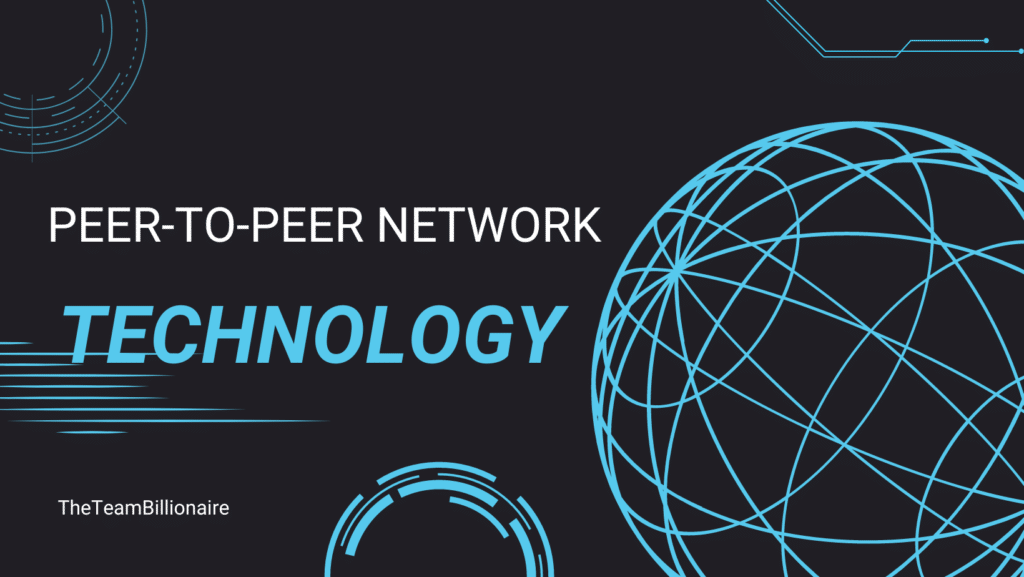Think of peer-to-peer (P2P) like a round table. It’s network layout where all members, also known as peers, connect right to one another. There’s no middle guy or main computer needed. In this circle, everyone acts like both a guest and a host. They can directly share stuff and help out each other. You can check here complete details of P2P Network & It’s Key features with Pros, cons.
The versatility of P2P structure makes it a viable alternative for a mess of packages, and it may be divided into three foremost categories: structured, unstructured, and hybrid networks. While in unstructured P2P networks, nodes are randomly linked to each different, main to much less efficient conversation, based networks have a more prepared structure that permits each node to successfully search for unique information within the community. Hybrid networks, however, combine elements of each P2P and client-server fashions, ensuing in more desirable performance compared to their based and unstructured opposite numbers.
[Good Read: What Is Blockchain Technology ]
What Is Peer-To-Peer Network?
Think of a peer-to-peer, or P2P, network as a school of fish. They all swim together, without a leader. Each fish, or “node”, can connect with any other, no central server needed. It’s different from how we usually share data, where we ask a server for info and it delivers. In a P2P network, we’re all fish, swimming together and sharing data freely. Every node can ask and give, equally. Like a decentralized, digital notebook, Blockchain is a type of these networks, used for tracking digital assets.
Business first used P2P networks after PCs became popular in the early 1980s. Different from mini-mainframes at the time, like Wang Laboratories Inc.’s VS system, they had centralized the functions. These mini-mainframes processed words, ran applications to unsmart terminals from one central computer, and kept files on one common drive. However, the fresh PCs had their own hard drives and incorporated CPUs. These advanced gadgets also had inbuilt applications, meaning they didn’t need a connection to a mainframe to work on desktops.

How do peer-to-peer (P2P) networks work?
P2P networks are unique, right? Unlike other types, there’s no central overseer. The users, or “nodes,” keep it running. Each user is like a station, ready to share, receive, and store files. It’s like swapping stuff with friends! And you’d store those files right on your own hard drive – no need for a big, central server. With this setup, P2P networks are kind of like a super team – secure, quick and fully on task.
It is important to consider that there must be a large number of active nodes in a P2P configuration in order to facilitate the placement of peer nodes for others in the network This is when the network is operating at its optimal level. Maintaining a sufficient number of nodes is important to keep the network running smoothly, even if some leave.
Key Features of Peer-To-Peer Networks
There are characteristics that make P2P networks unique and beneficial. Lets delve into these features, in detail.
Decentralization
One of the aspects of P2P networks is their nature. This means that there is no server or authority governing the network. Instead each participant or peer has capabilities and responsibilities. Peers directly interact with one another sharing resources and services without relying on a point of control. This decentralization eliminates the risk of points of failure. Enables the creation of more resilient and scalable networks.
Self-Organizing
P2P networks are systems that organize themselves without control. As participants join or leave the network, the network. Reorganizes automatically. Peers can. Connect with each other using methods, like centralized directories distributed hash tables (DHTs) or peer exchange protocols. This decentralized approach allows P2P networks to handle changes, in presence and resource availability effectively while maintaining their stability and adaptability.
Direct communication
P2P networks permit seamless communique among peers, disposing of the need for intermediaries. It allows instantaneous and actual-time interaction among individuals. Direct communication is in particular treasured in applications inclusive of immediate messaging, voice and video calling, and remote teamwork. Without relying on a critical server to relay messages, P2P networks provide quicker communications and reduce latency.
Privacy and security
P2P networks have the ability to substantially enhance privacy and security. Thanks to direct communique among friends, information may be encrypted and stored private throughout transfer. In addition, P2P networks have the potential to use encryption, authentication, and access manage techniques, ensuring that only authorized peers have get right of entry to to shared sources. With no need for important servers, P2P networks are a great deal much less prone to unmarried-factor assaults and unauthorized access, further strengthening their protection.
P2P: Pros & Cons
- Now, permit’s delve into the numerous blessings of the P2P network in blockchain.
- Its decentralized nature makes it enormously available, ensuring that even supposing one peer is going offline, others remain active.
- This makes it nearly not possible for everyone to carry down the whole blockchain. Furthermore, P2P networks provide more suitable security, in contrast to traditional consumer-server systems.
- While utilising cloud computing can also require trusting groups like AWS and Google, the decentralized nature of blockchain gets rid of the want for 1/3 birthday celebration agree with.
- This method your important statistics isn’t at risk of modification.
- In fact, P2P blockchain networks are proof against censorship by using primary government.
For More Info: Please Click Here.
